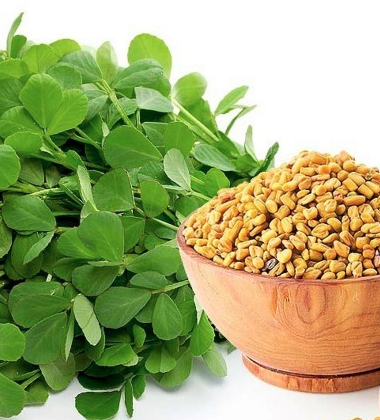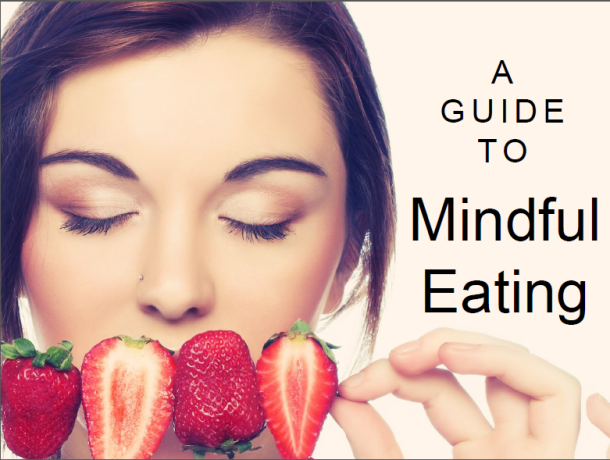
by dnshah | Oct 2, 2020 | Diet and Weight Loss, Juices and Smoothies, Recipes
This month I want something orange and earthy to symbolize Fall and all things October-ish. But the challenge is to avoid refined sugary treats. So I’m compromising – not a true indulgent dessert, yet it is sweet satisfaction without all that sugar! Remember I broke up with sugar!
INGREDIENTS
- 1 cup strongly brewed chai tea cooled
- 1 serving protein powder (I use Naked Pea)
- 5-7 ice cubes
- ½ cup your choice of non-dairy milk
- ¼ cup pumpkin (canned, or cooked pieces)
- 1 tsp vanilla extract
- ½ tsp cinnamon
- ¼ tsp ground ginger
- ¼ tsp nutmeg
METHOD
- Blend all ingredients together and enjoy!

by dnshah | Sep 1, 2020 | Diet and Weight Loss, Health and Wellness Tips
Fitness enthusiasts are talking about fenugreek after a June, 2020 study found that fenugreek increased strength, lean muscle mass, endurance, body composition, functional threshold power, and sex hormones in 8-weeks. As an East-Indian I can tell you fenugreek is not “new” – in fact it is an ancient spice (with ties to India, Egypt, China, Africa, & Greece) getting a new spotlight.
I have seen health-conscious people in India water-soak it overnight and swallow it raw the next morning boasting a general set of health benefits, which includes strength, endurance, and increased sexual desire. The placebo-controlled, double-blind study followed 138 men over 8-weeks and analyzed that the fenugreek groups improved muscle size & strength while reducing fat. It also showed increase of sexual hormones. Other studies have shown promise for fenugreek to be used by men and women for establishing hormonal balance post-menopause or andropause (male menopause), or effective control of type 2 diabetes.
I use fenugreek seeds and leaves for cooking. It has a sweet, nutty, and slightly bitter flavor, and is very aromatic. My knowledge of fenugreek seeds was piqued after the birth of my daughter, when my elder female relatives told me it would increase breast milk production. In fact a 2005 study and a 2011 study confirm that fenugreek does effect breast milk production, and may improve colic symptoms in nursing babies.
Some ways to incorporate fenugreek seeds or leaves are:
- Lactation herbal tea
- Garam Masala – a powered collection of super spices to add to all your meals
- Methi Dal – an Indian dal stew
- Methi Paneer – Paneer curry with leaves of spinach and fenugreek
- Sprouted fenugreek salad
- Methi Thepla – Gujarati roti (flour tortilla) with both powdered seeds and leaves. I make mine gluten-free.
You can purchase your fenugreek from local Indian stores in your city, or order online.

by dnshah | Sep 1, 2020 | Age Defying, Diet and Weight Loss, Health and Wellness Tips, Obesity
-with sugar! In the United States, 88 million adults—more than 1 in 3—have prediabetes, but more than 84% don’t know they have it (CDC). Diabetes is the 7th leading cause of death in the US, and it’s also the #1 cause of kidney failure, lower-limb amputations, and adult blindness.
Classis symptoms include
- Urinate a lot (often at night)
- Are very thirsty
- Lose weight without trying
- Are very hungry
- Have blurry vision
- Have numb or tingling hands/fee
- Feel very tired
- Have very dry skin
- Have sores that heal slowly
- Have more infections than usual
If you feel like you could be in a high-risk group for pre-diabetes, your health care practitioner can do blood tests to get more information:
- An A1C test measures average blood sugar level over the past few months
- A fasting blood sugar test measures blood sugar after an overnight fast
- An oral glucose screening test measures blood sugar after drinking glucose
People that are higher risk for diabetes (Types 1 & 2, pre-diabetes, & gestational) have multiple risk factors below:
- Overweight
- Older (> 45 years for prediabetes, > 25 years for gestational)
- Family history of diabetes or gestational diabetes
- Are physically not as active (< 3x/week)
- Have birthed a baby weighing more than 9lb
- African American, Hispanic/Latino American, American Indian, Alaska Native, Pacific Islander, or Asian American
There are people suffering every day, and the numbers keep rising. Please join me in breaking up with sugar – it doesn’t have to be a radical break-up with significant withdrawals… plan for a gentle reduction and substituting those decadent desserts into less sugar-filled ones. It’s all about progress, and we really have to start somewhere… If you want help with meal planning and satisfying your sugar cravings, give me a call and let’s see how we can co-author your breakup with sugar!

by dnshah | Jul 28, 2020 | Age Defying, Diet and Weight Loss, Health and Wellness Tips, Virus
Green tea contains an anti-viral and anti-inflammatory compound called EGCG (epigallocatechin). Some of the benefits of EGCG that we know about include:
- Direct or Indirect Inhibition of viral entry: (hepatitis B & C, Zika, HSV, HPV, Epstein-Barr, Dengue, West Nile, Chikunjunya, Enterovirus, Japanese Encephalitis, Tick born Encephalitis, HIV, Ebola, Influenza)
- Inhibits inflammatory enzymes
- Helps to Prevent respiratory infection
At this time COVID19 has no known universally accepted treatment or cure and there is no clinical evidence that EGCG can prevent, treat, or cure COVID19. Still some chemists are looking into the impact of EGCG on Covid19 because it has a high affinity for binding to the SARS-CoV-2 virus.
While primarily found in green tea, small amounts can also be sourced from apples, kiwi, strawberries, hazelnuts, and pecans. There were some concerns cited on the purity of green teas sourced internationally, and possible harm from teas sourced from sites that didn’t have as thorough government safety standards.
The full effects of EGCG on COVID19 are unknown to date. Excessive EGCG hasn’t shown serious adverse effects in studies ()19). It seems to have broad human appeal due its safety profile; however excessive caffeine consumption should be monitored. There are known medication interactions so always check with your doctor before making dietary changes.

by dnshah | Jul 28, 2020 | Age Defying, Diet and Weight Loss, Health and Wellness Tips, Virus
Dietary flavonoids are a large family of plant compounds sharing a structure, and there are 6 major subfamilies (anthocyanidins, flavan-3-ols, flavanones, flavones, flavonols, and isoflavones). Quercetin is a flavonoid from the Flavanol subfamily.
Some of the functions quercetin provides (human or animal studies) include:
Main dietary sources (from the USDA database) are listed below. The way food is prepared (boiled, fried, etc.) impacts quercetin concentration.

Excessive quercetin may cause headache, tingling of arms/legs, and kidney damage. There are some possible medication interactions (antibiotics, cyclosporine, warfarin, liver medications), so always consult a doctor when changing dietary habits.

by dnshah | Jul 28, 2020 | Age Defying, Diet and Weight Loss, Health and Wellness Tips, Stress Management, Virus
Vitamin D is a fat-soluble vitamin that isn’t present in many foods. One of the ways we synthesize vitamin D is through sunlight on our skin. Many factors will control how much vitaminD our bodies can make (think location, altitude, season, skin darkness), so it is important to have a backup vitamin D strategy, especially in winters when we don’t have as much opportunity to be in the sun outdoors. Darker skin reduces the absorption of vitamin D.
Vitamin D is very important for our immune system to run optimally. Some of its functions include:
- Stimulate lung protection from infection; reduces risk of acute respiratory infection
- Inflammation reduction
- Helps with calcium absorption (promotes healthy bones)
- Modulation of cell growth (including apoptosis)
- Neuromuscular functions
- Helps to prevent colon, prostate, and breast cancers
There are no known studies proving prevention, reduction, treatment, or a cure against COVID19. That said, many scientists are talking about ensuring adequate vitamin D especially now in light of pandemic conditions.
According to the USDA, adults and children (1-70 years) need 600 IU of vitamin D daily, with older adults needing 800 IU daily. This vitamin is not easily found in foods, but below are some food sources. Non-food sources include sunlight and supplements.

Obtaining sufficient vitamin D from food alone is difficult, hence the need to fortify staple foods with vitamin D (milk, cereals, orange juice, yogurts, margarines). If people have fat absorption issues, this can reduce the uptake of vitamin D also. Many people depend upon vitamin D supplementation to meet the recommended daily intakes.
With supplementation, there can be potential interactions with medications (steroids, weight loss medications) and risks that come with getting too much vitamin D. Excessive vitamin D can cause symptoms (anorexia, weight loss, heart arrhythmias, excessive calcium-blood levels). Excessive calcium-blood levels can lead to vascular and tissue calcification along with other damages.










